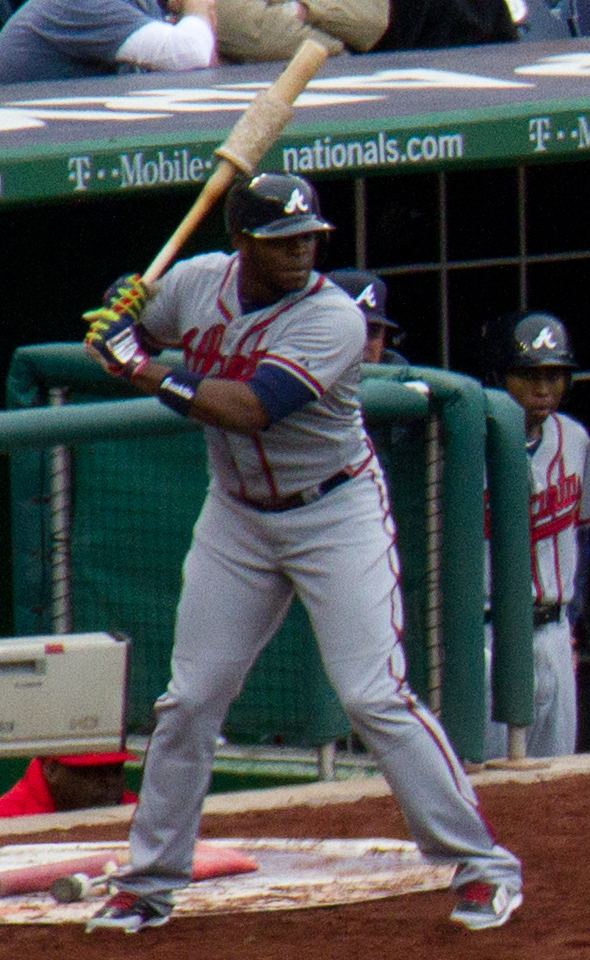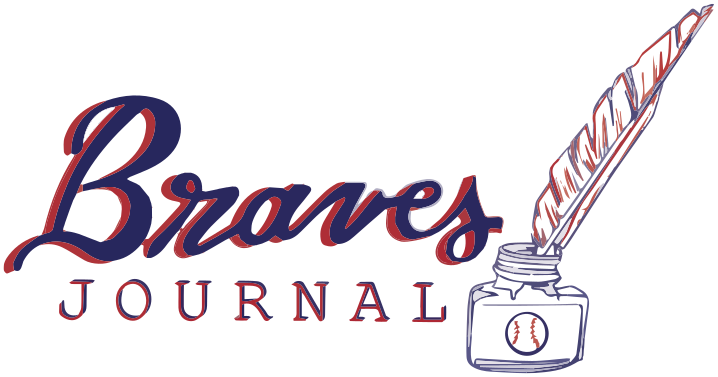
I have to start this out by saying if I could title this “Trades in Braves History†rather than best or worst, I would. In my opinion, this was one of the worst trades on the surface, but then it turned out great once the dust cleared. This is one of the most interesting trades the Braves have made because it wound up having many moving parts. Let’s break down Best Trades in Braves History: Martin Prado!
The Initial Trade
Justin Upton and Chris Johnson were sent to Atlanta in exchange for Martin Prado, Randall Delgado, Zeke Spruill, Nick Ahmed and Brandon Drury.
Martin Prado: Prado was a fan favorite and a clubhouse leader. This was what made this trade hurt so much. I vividly remember waking up that day and reading the news headlines and falling into a mini depression for the next few days, Prado was my favorite player for as long as I could remember. For comparison sake, Prado was worth 6.2 WAR over the next 2 seasons, just a tad over Upton. Below is an awesome highlight video from Prado’s last season as a Brave, 2012.
Justin Upton: Upton put up two solid seasons in a Braves uni, worth 5.9 WAR combined and finishing 17th in MVP voting during the second. He was then traded to the Padres for Jace Peterson, Mallex Smith, Max Fried, and Dustin Peterson. This is where it starts to get complex.
Chris Johnson: After bouncing around league average, Chris Johnson hit an outstanding .321 in 2013 and put up 2.5 WAR, earning a 3-year, $23.5M extension. That didn’t end well at all, as Johnson was worth negative 0.9 WAR across the next two seasons before being DFA’d.
Delgado, Spruill, Ahmed and Drury: Delgado, Spruill and Drury never amounted to much. Ahmed, on the other hand, broke out over the past two years with two 4+ WAR seasons. Sure, it took four years for him to get there, but that’s huge production for what appears to be a trade throw in.

The Secondary Trade
Justin Upton was sent to the San Diego in exchange for Jace Peterson, Mallex Smith, Max Fried and Dustin Peterson.
Justin Upton: In his walk year Upton was worth 4.2 WAR for the Padres. This was enough to earn him a 6-year, $108M deal from the Tigers in the offseason.
Max Fried: Now emerging as the cream of the crop, Fried alone made this entire mess a good trade. Worth 3 WAR in his first full season as a starter, the Braves are excited to see if Max can become a staff ace with a wicked curveball.
Jace Peterson: Jace had two above average seasons in Atlanta, but has since been a below average player.
Mallex Smith: In 2016, Mallex stole 16 bases in just 65 times on base (not including PR opportunities). He was then traded to Seattle for Luiz Gohara. He broke out with a 3.6 WAR 2018 in Tampa Bay before being traded back to Seattle and struggling in 2019. I always liked Mallex and wished we could’ve kept him in Atlanta.

Dustin Peterson: Peterson went 0-2 with a strikeout in his Braves career. Safe to say he wasn’t the focal point of the deal.
Best or Worst Trade?
Tying this all together, the Braves gave up a clubhouse leader and fan favorite for 2 years of similar production that they then flipped for Max Fried. They lost some money due Frank Wren’s poor decision on Chris Johnson, but it is possible the Braves don’t make the playoffs without Chris Johnson’s breakout 2013, although they won the division by 10 games. It is also disappointing that Nick Ahmed now appears to be a perennial All-Star, but I don’t think anybody saw that coming after his first few years in the majors seemed pretty lackluster. All in all, I’m calling this trade a win. The team was slightly improved in 2013/2014 and Max Fried still has five years of control to make up for the disappointment many fans still feel by the loss of Prado 7 years ago.
As he was always a clubhouse leader, excellent teammate and great mentor, let’s all hope when Martin officially retires he decides to take up a coaching position in Atlanta.
Thanks for reading on Best Trades in Braves History, Martin Prado. Check out our entire category of Braves Best/Worst Trades in History here.



Strange headline considering that the story is about two Justin Upton trades, and Prado is a guy we originally signed and developed, never traded for. In general though I agree with the analysis – both of the Upton trades were good deals for us. I don’t mind Ahmed’s success, just like I don’t mind Tommy La Stella’s success last year. His odds of doing that in a Braves uniform were low. Good for him for putting it all together.
Great article.
I can’t count Ahmed’s success against this deal either. Will some guy’s figure it out if you give them an absurd amount of time? Sure, but Atlanta wasn’t going to be a team to give Ahmed 1,020 PAs to figure it out the way Arizona did. From his age 24 through 27 seasons, Arizona gave Ahmed those 1,020 PAs while he put up a 62 OPS+. His two seasons of 4+ WAR performance are heavily dependent on his defense as he has below average offense (88 OPS+), and he doesn’t really steal bases dependably (25 stolen bases in 43 attempts).
I’d call the original decision to trade Prado and gang for Upton and Johnson a win. I prefer to look at these trades only within the context of how much time control you have with the player when you trade for him, unless you have some sort of insider information that they’ll sign a below market extension, which I’m not sure happens a whole lot. That’s why I don’t think the Tim Hudson trade is that good since he only had one year left of control. But the trades for guys who have a really good season and then you stupidly extend them (Chris Johnson and Uggla), I look at as two separate deals (the trade and the extension).
Arizona got 1 year of control with Prado, and we got 3 with Upton. We get two really good seasons with Upton, and then turn him into a boatload of talent. Had we not traded Mallex for Gohara, or if Gohara had become anything serviceable, you’d have to look at the second Upton trade as almost as good as the original Heyward trade in terms of how good the corresponding deal was. In another world, we put Mallex in center and trade Ender for something useful. We’re probably a better team in 2020 if we did that.
Oh, how I loved both Gohara and Mallex. Gohara is only 23, so there’s hope for both of us yet. Mallex is 27. I just wish teams would stop screwing around with Mallex, and some team would just plug him in centerfield and let him play. To Matt’s point, he puts up a 3.6 fWAR, 118 wRC+ season, and then gets shipped out again. This year will be a big year for both of those players towards finding out who they are.
Well done, apart from the central premise!
@1, I probably could’ve titled it the Justin Upton trades, but I’ve always been partial to Martin.
@2, some great points. I’m not too upset about the Ahmed loss as I agree with you Arizona gave him way more time than we would’ve to develop, but I do wish we still had mallex or at the least he could have some stability somewhere.
The worst part about this trade is the re-signing of Chris Johnson, and you can argue (as Rob did) that the dumb extension wasn’t really part of the trade at all. Frank Wren completely unraveled himself with the extensions of two guys (Johnson and Dan Uggla) who he acquired in outstanding trades and couldn’t bring himself to let go when their contract was up.
I think this was a good trade even without Max Fried. It provided a couple of foundational pieces for the best team of the Wren era, and I could formulate an argument that the team doesn’t win the division if you take Justin Upton and Johnson off of it and replace them with Prado. The fact that we now have Fried as a result of this trade makes it even better.
Granted, I get way less emotionally attached to players than many folks. We could trade Freddie Freeman and, if I thought we got good enough return (unlikely in a trade of Freeman, but work with me here) I’d be OK with it. I understand the love for Prado, but this was objectively the right move.
I’ve heard it said numerous times that the Uggla trade was great but the extension wasn’t. I get it… and I felt the same, right but it actually didn’t work out that way as Infante put out near the exact same WAR in 2011 as Uggla and had another year of cheap control in 2012. Put simply, the Braves would’ve been in a better position had they not made the trade for 2011 and beyond. The Infante and Prados of baseball were so undervalued back then. Zobrist broke that thought process.
https://apnews.com/75087708a030c20637c5ea25b5c99c40
This gets at what Rob asked yesterday. MLB claims that a reopening will, at 50% salaries and no paid gate, give players 89% of revenues. I suspect this is unduly pessimistic, though how pessimistic it is requires a lot more data than I have, and I suspect a lot more data than MLBPA has.
It would seem like it’d be a hard way to turn a profit if you can’t have people in the stadium, even with a corresponding increase in TV revenue. And I hope that these are two parties fighting over single percentage points of the deal, not two parties with a huge, potentially insurmountable gap.
To those who were around: when the labor agreements were reached in the spring of 1995, then did everybody makes plans of suiting up and playing immediately? What happened after an agreement was reached? My concern is that if there continues to be labor negotiations as we get towards the end of May, then this could affect the start date.
In 1995 they managed to play after only a 23 day spring training as all the players were already training separately. From various Braves players twitter feeds I expect something similar could happen this year.
One incident between Prado and Braves Management that got a little prickly in his early days was he claimed Braves had promised to pay for the air fares of his family to Atlanta when he had reached a certain level of accomplishment in his rookie or following year. Who would be the judge of that was not revealed but his play was soon good enough the tickets were forthcoming without undue delay. And away they came.
New thread. Blazon, I’ll bring you over.
https://bravesjournal.mystagingwebsite.com/2020/05/18/predicting-braves-30-man-roster/